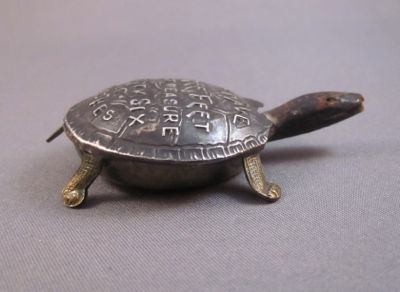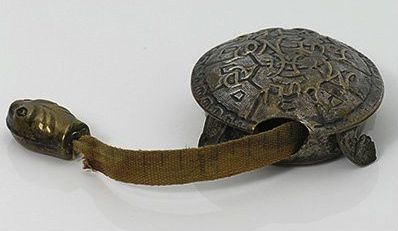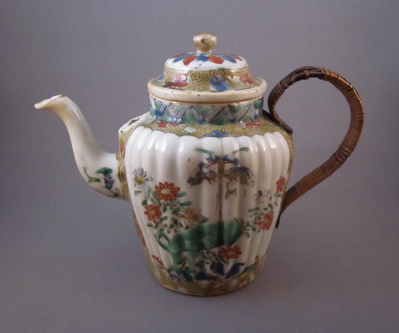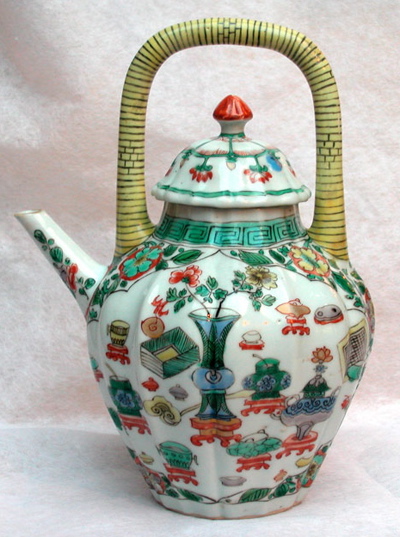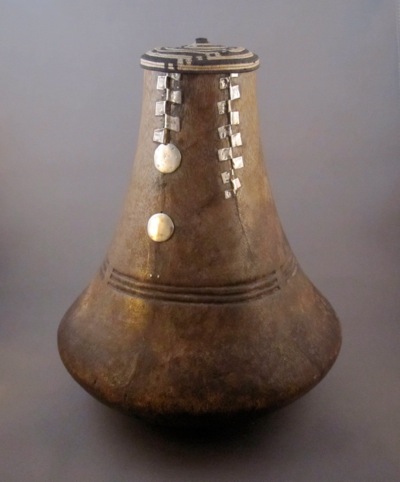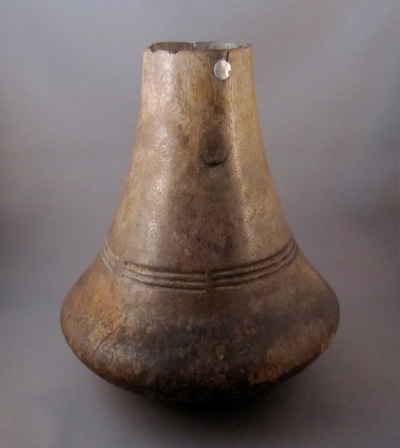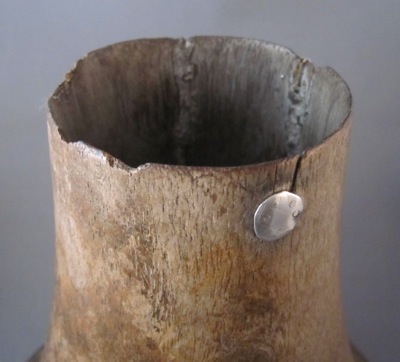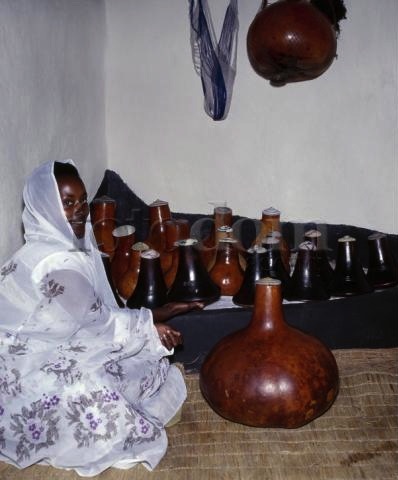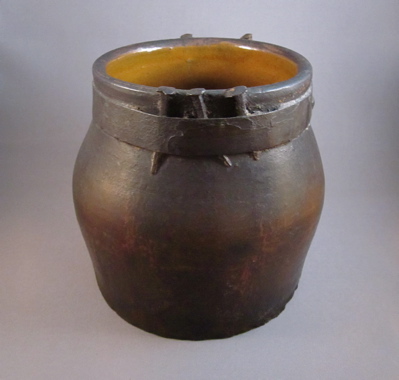I just returned from the Antiques Garage Flea Market in Chelsea with this whimsical turtle-shaped tape measure with an inventive repair. It was purchased from dealer Janet West, who has great taste and wonderful eye for the unusual. The sterling and brass tape measure dates from the first quarter of the 20th century and measures 2-3/8″ long. Written in a quirky font in raised letters on the back “I have three feet that measure thirty six inches”, a witticism pertaining to the 3′ cloth tape measure once concealed inside the shell. When the original silver head became detached and lost, a clever person whittled a new head out of wood, carefully carving out delicate facial features. So even though this perky little turtle began its life as a sewing implement for an adult, it was reborn as a toy to be played with and loved by the next generation.
This lucky guy still has his original silver head, but I think mine has more character.
It’s no wonder the original head and flimsy cloth tape on my little fellow became detached. I would bet a small child pulled the head out one too many times, just as I would have done at that age.
Photos courtesy of Silver Magpie
I am a turtle lover and would have bought the tape measure even if it were in “perfect” condition but as you know from reading my posts, perfection is in the eye of the beholder and to me this one IS perfect. My love of turtles began in the second grade when I was taken on a class trip to the Turtle Back Zoo in West Orange, NJ. Soon after that I had a quick succession of pet turtles, all named Cornelius, and all buried in the back yard of our Short Hills, NJ 1920s English Tudor style house. As the turtle tape measure and my old house date from the same period, the original home owner might have owned my tape measure!
Now we have dozens of unnamed turtles, which I look forward to seeing each spring, in the pond at our house in Upstate NY. I took this photo of an eastern painted turtle laying her eggs in our garden last summer.
